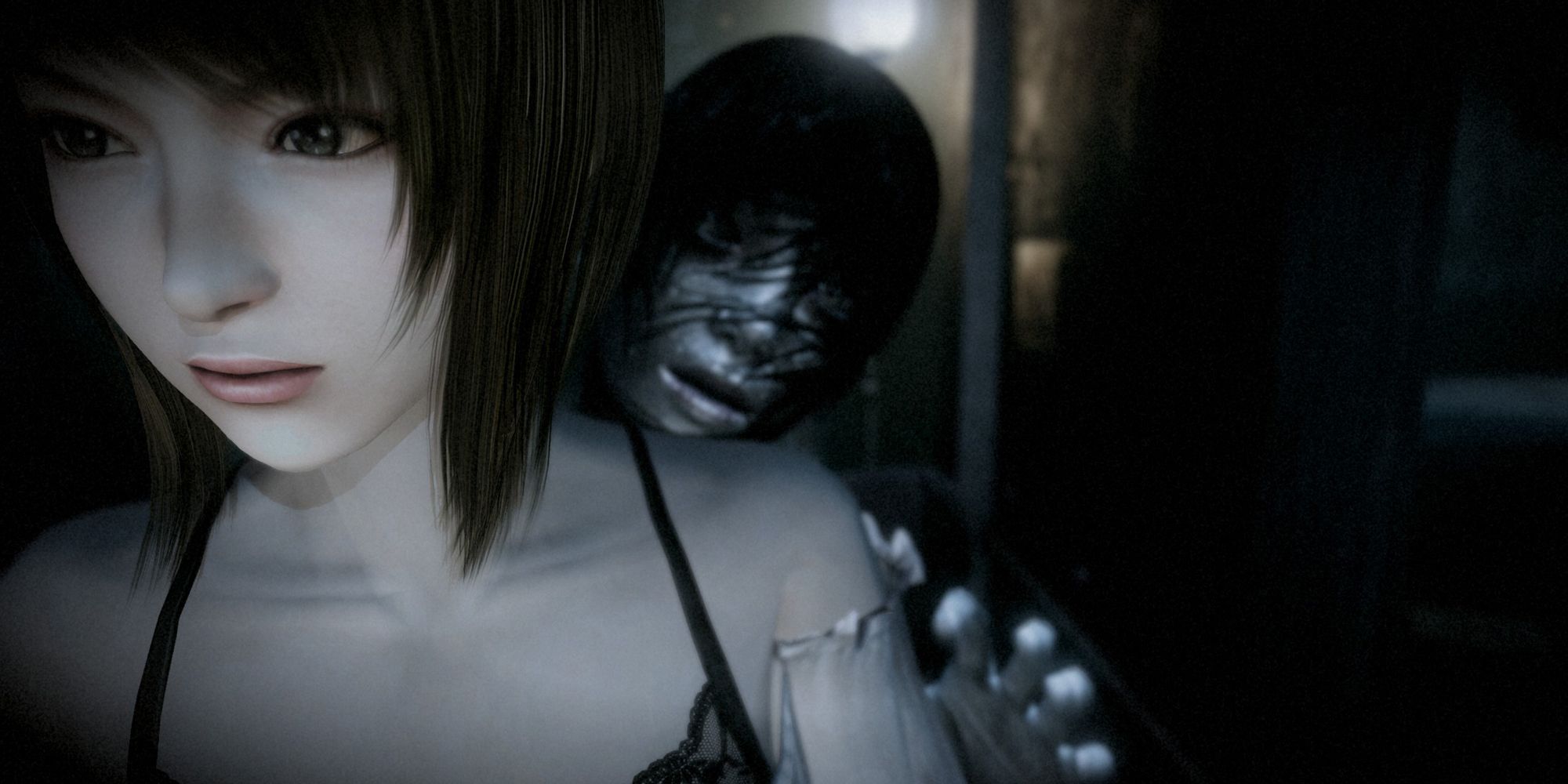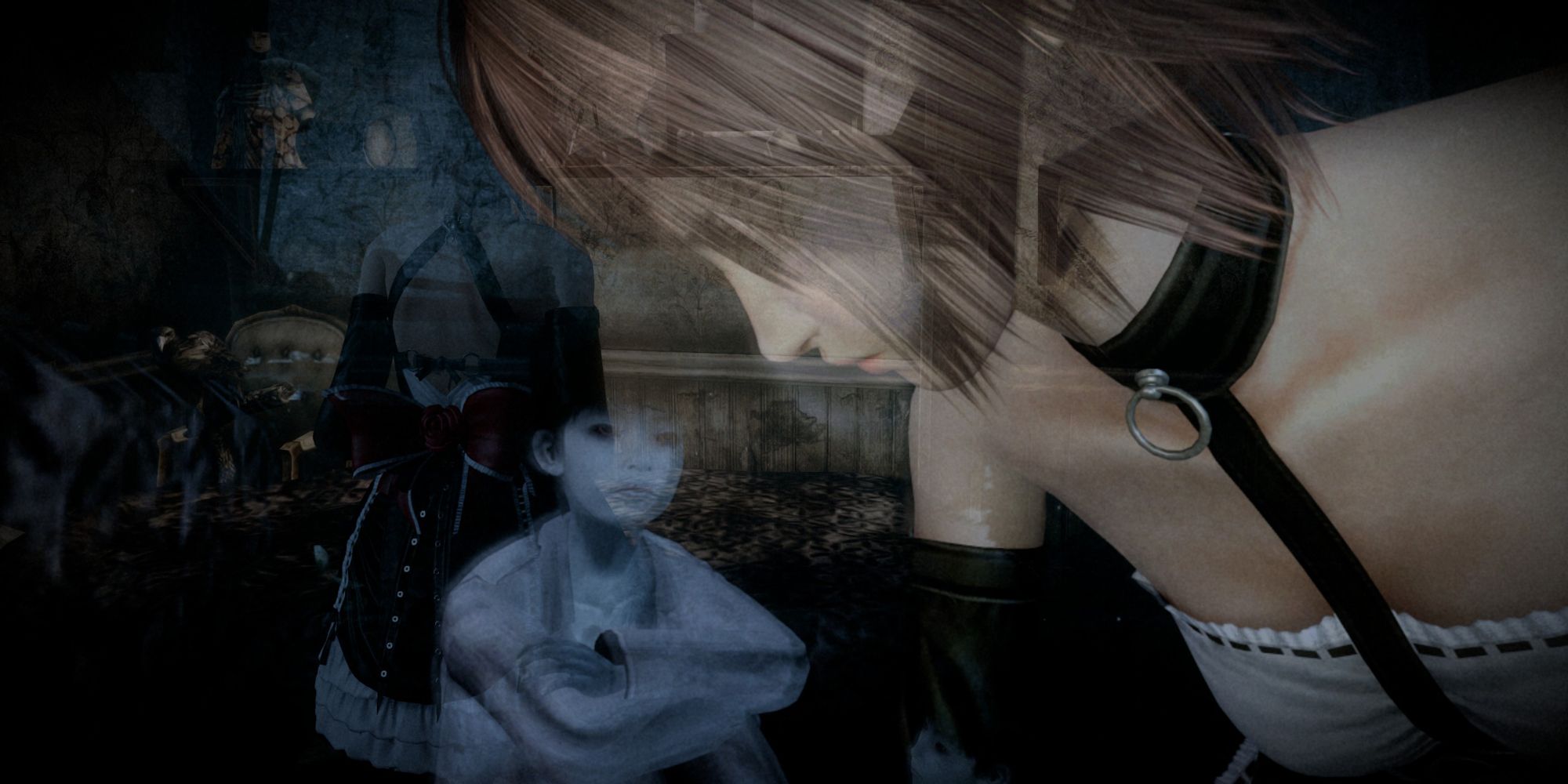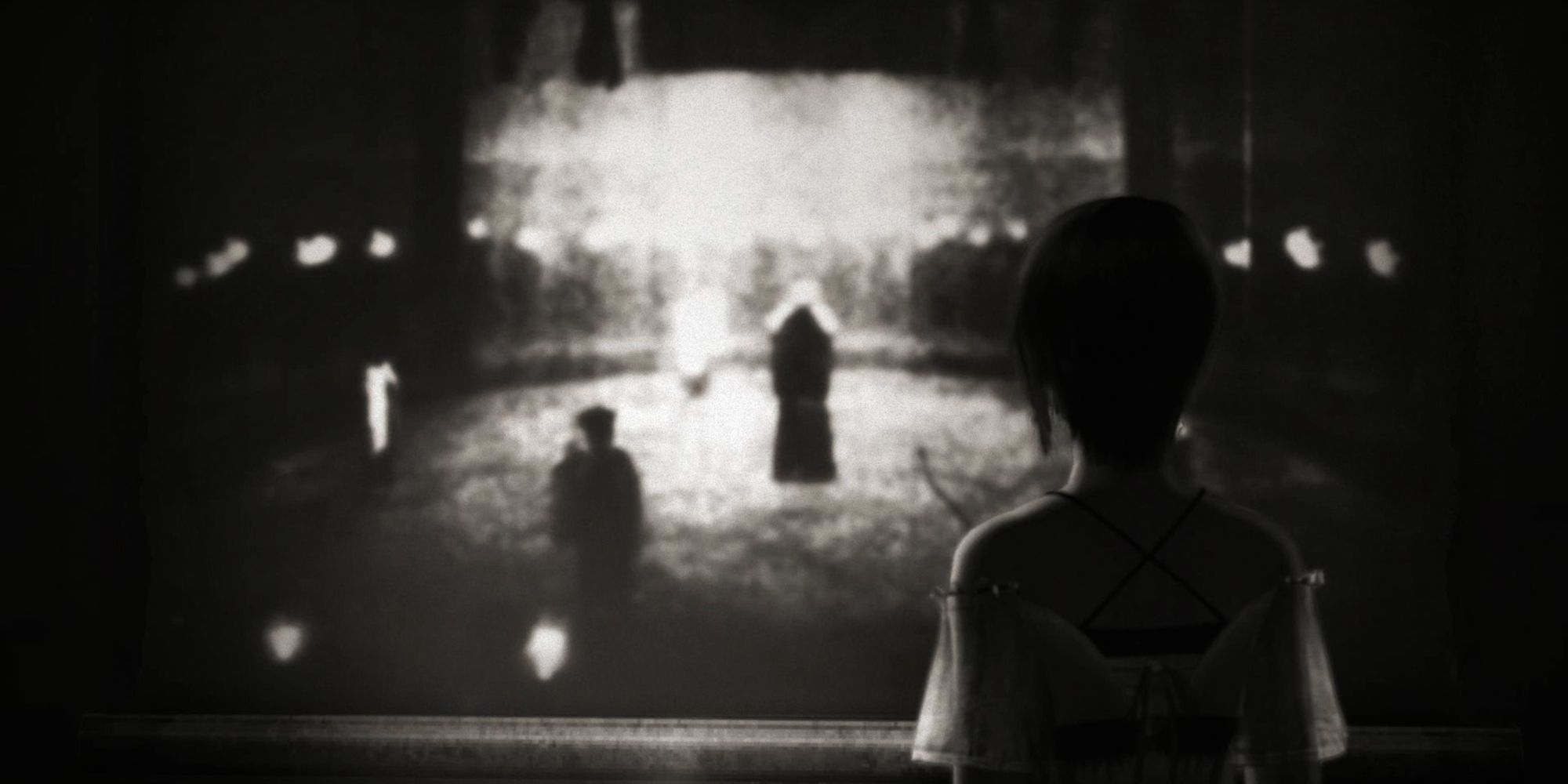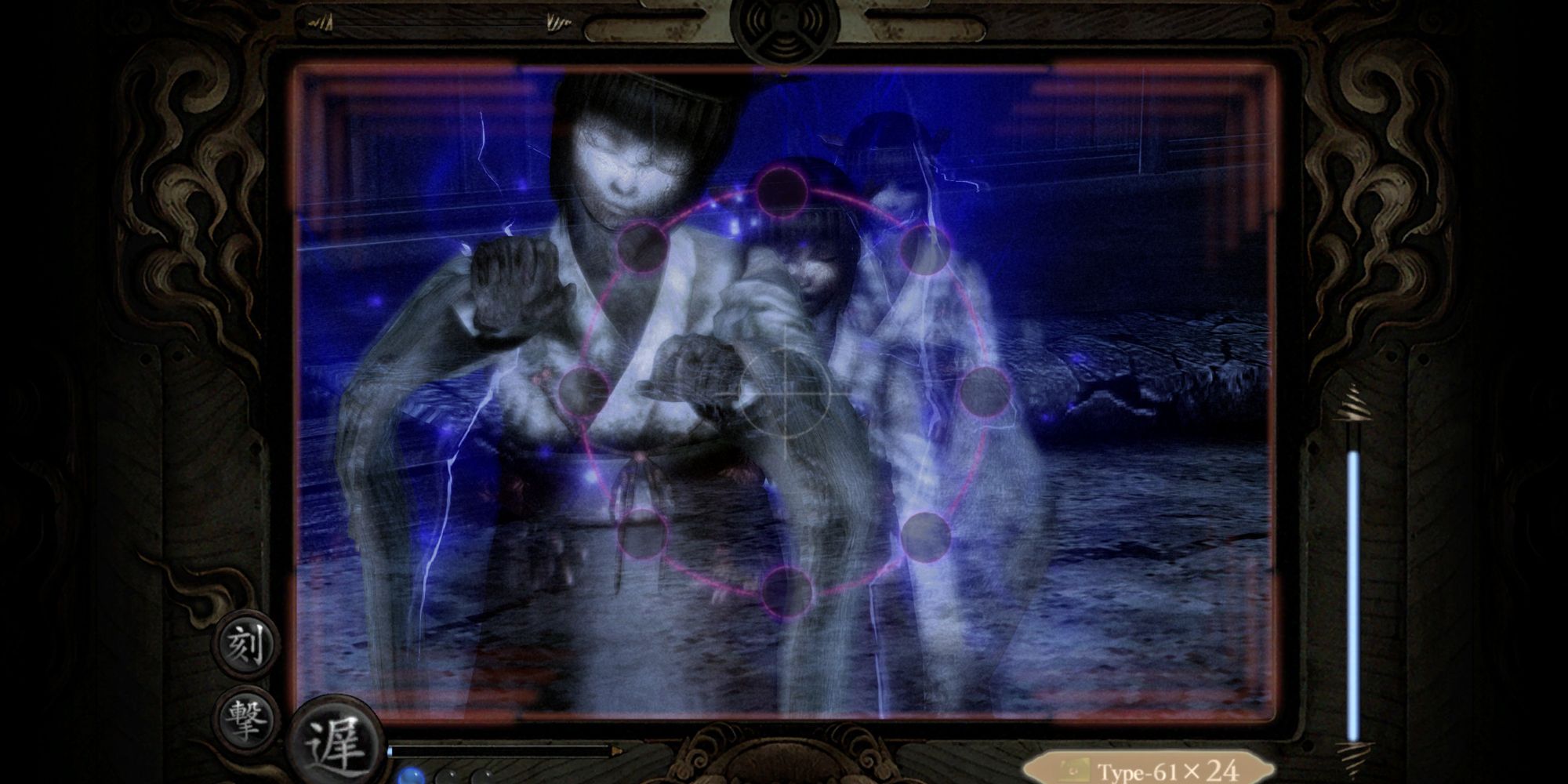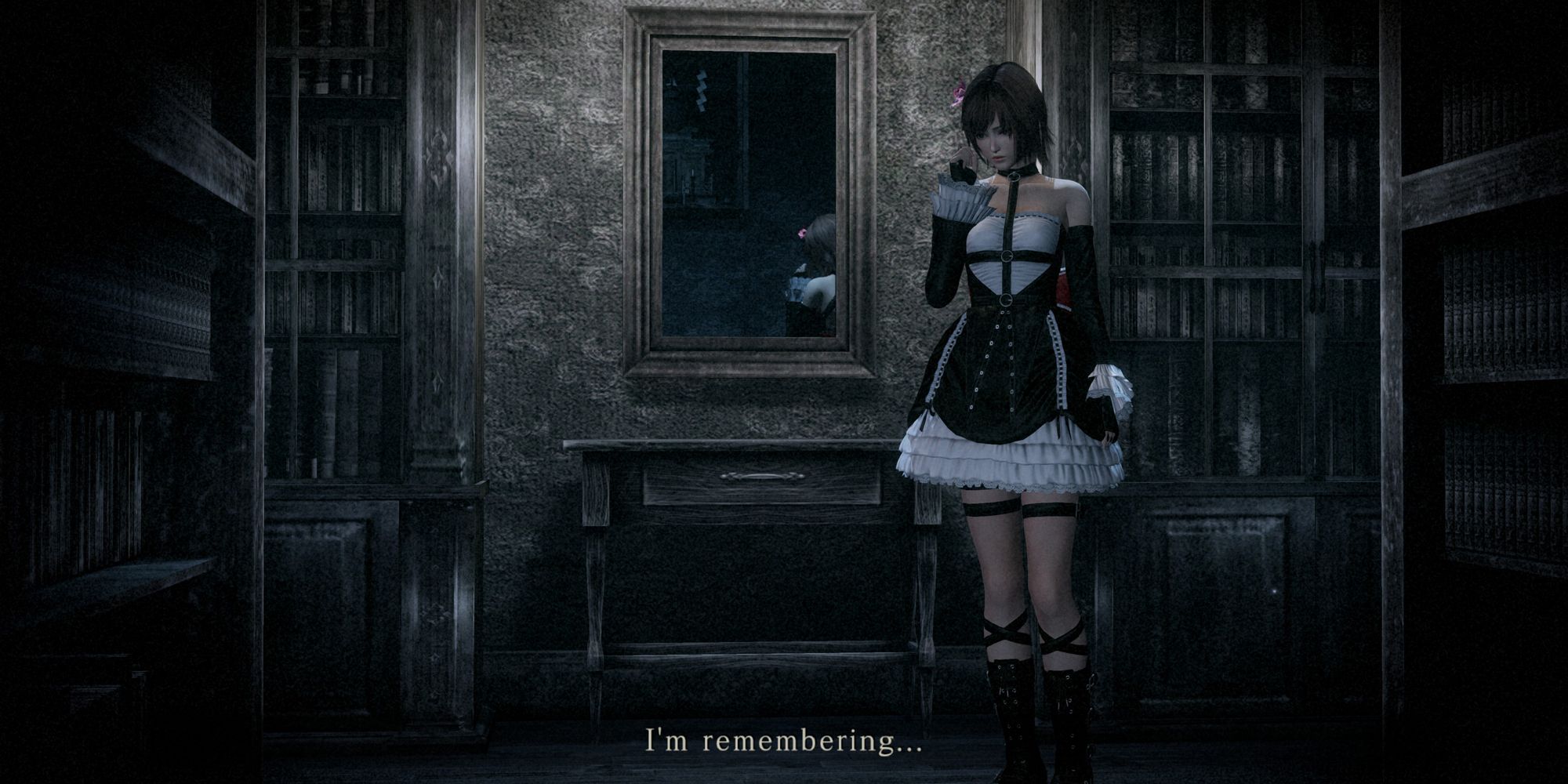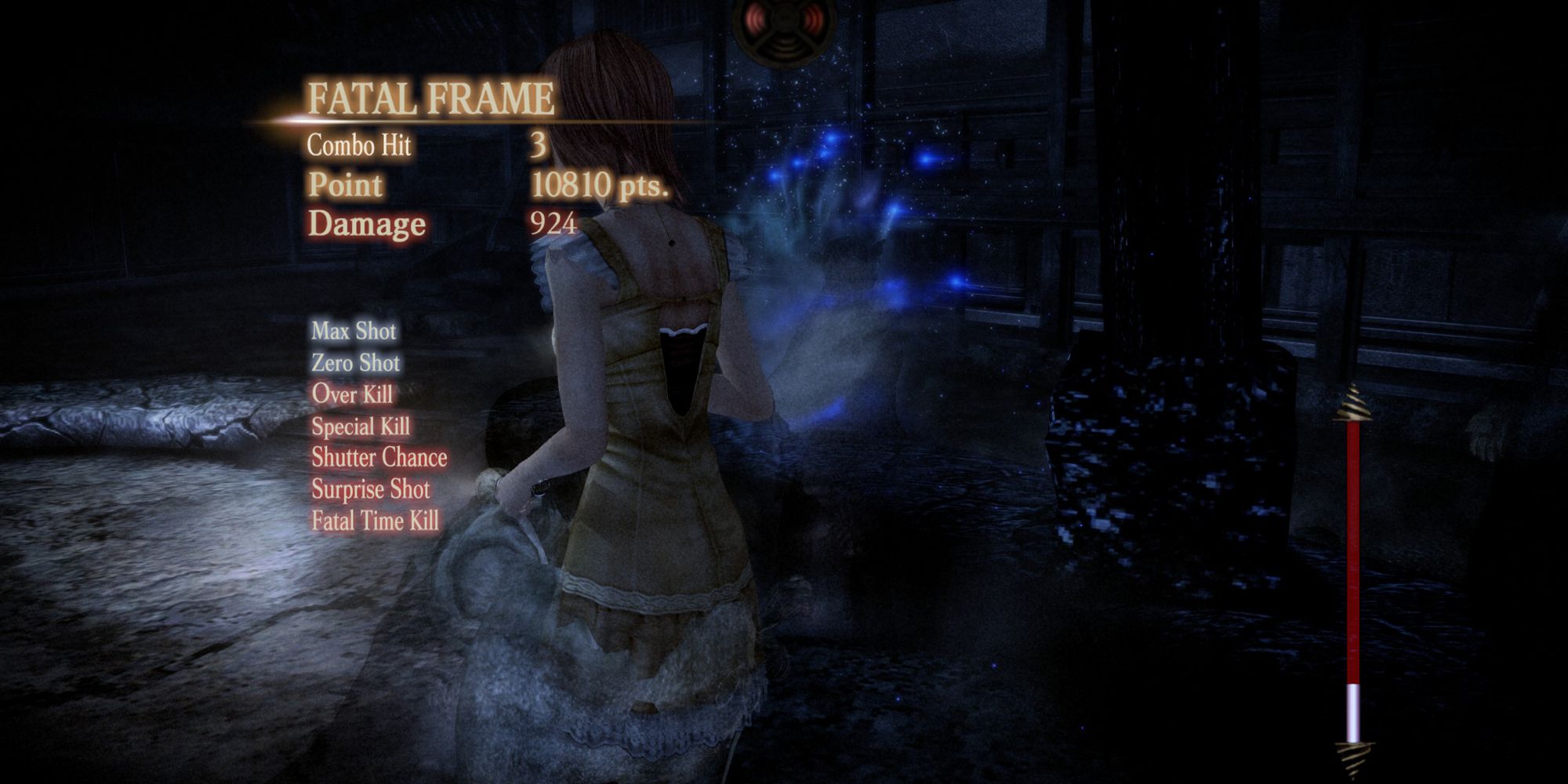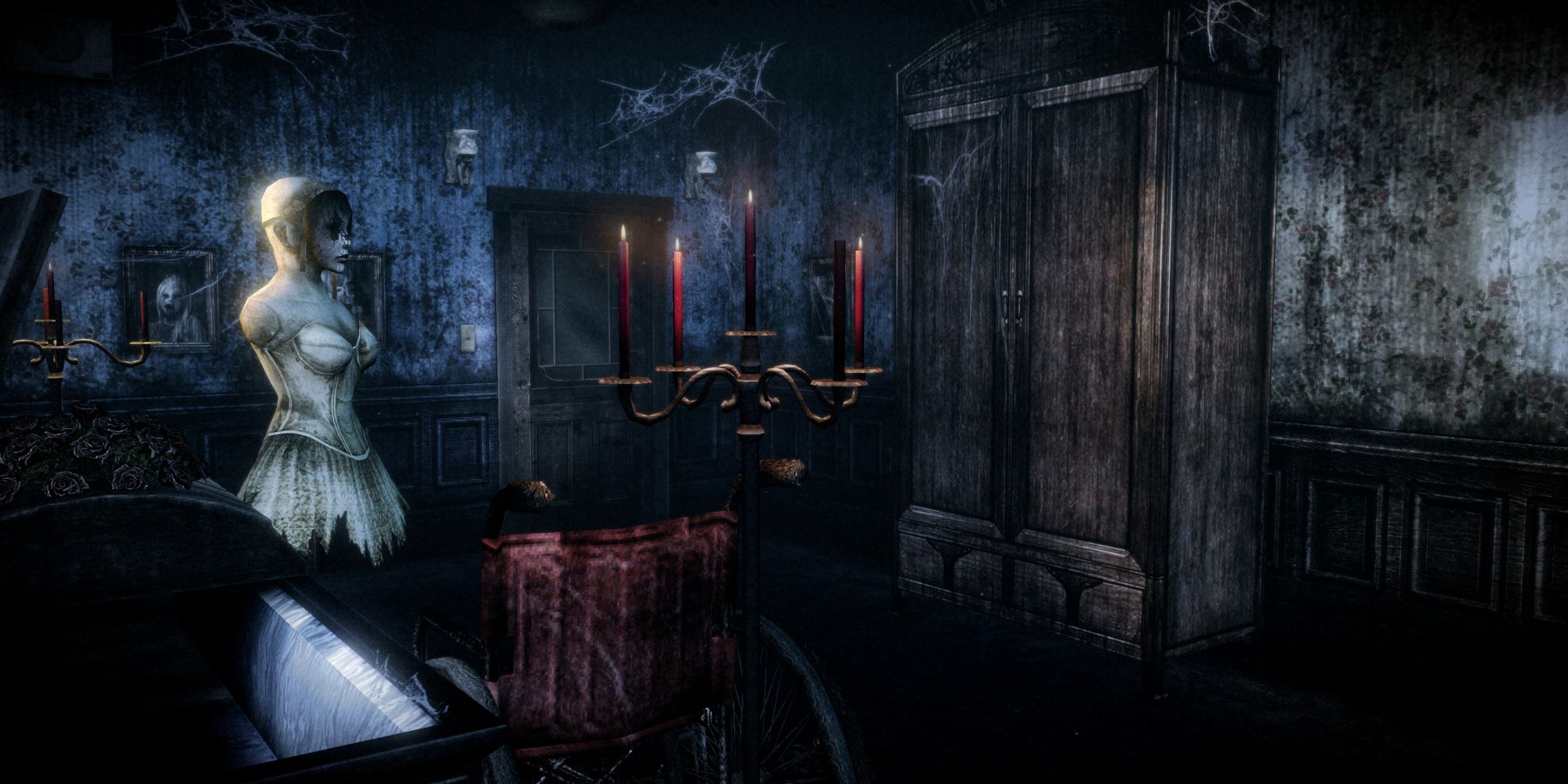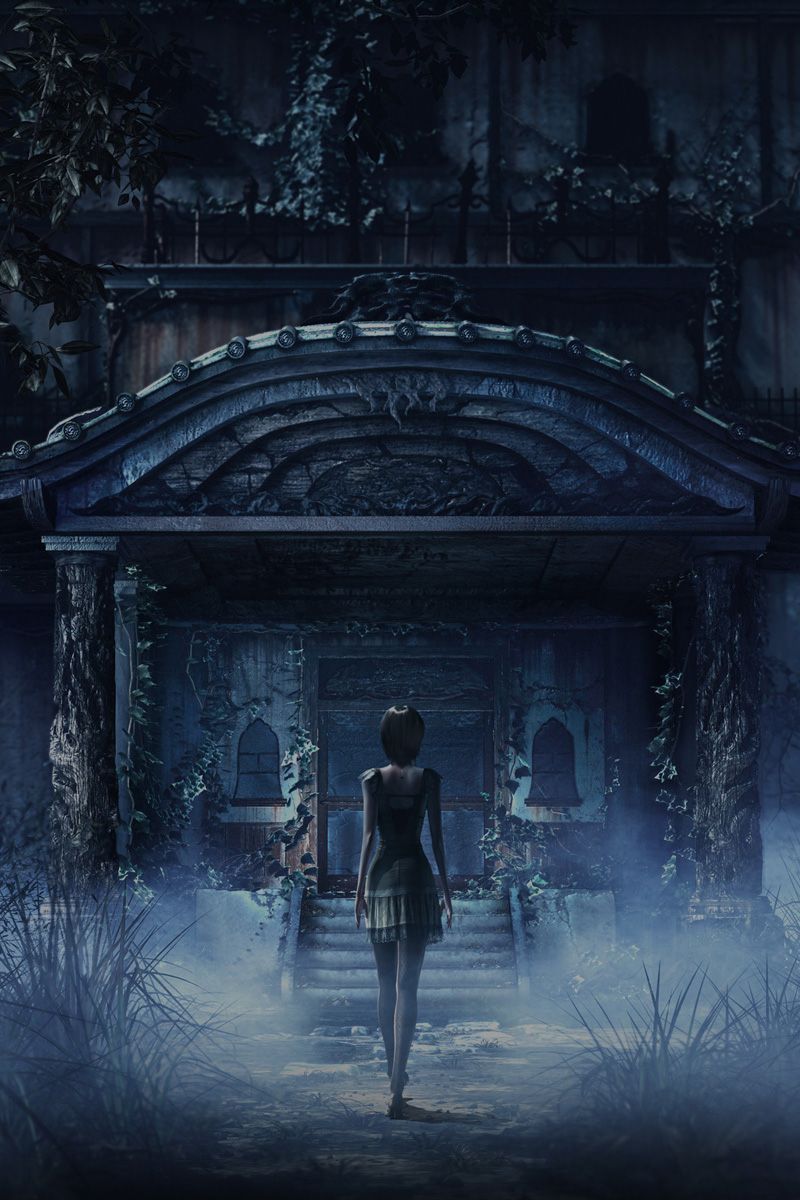
Fatal Frame: Mask of the Lunar Eclipse
This re-release of the 2007 Wii horror game has echoes of what make this classic horror series great, but is stifled by a lumbering pace, cumbersome controls, and lack of genuine scares.
- Camera-based combat remains novel and satisfying
- Intriguing J-Horror story
- Classic creepy environment filled with world-building
- Wiimote controls have been poorly adapted
- Unnecessarily sleezy camerawork and outfit options
- Flat, muddy textures
- Excrutiatingly slow mechanics
I’m a devotee to the Church of Fatal Frame (or Project Zero, as it was oddly called in Europe, because–I dunno–Europeans don’t like that sweet, sweet alliteration?). The thing is, my devotion is based on the excellent PlayStation 2 trilogy released between 2001 and 2005, and as someone who never owned a Wii or Wii U, I missed out on the Nintendo-exclusive later entries.
In recent years however, Koei Tecmo has been giving the venerable horror series an oddly ordered cross-platform renaissance. The re-release of the 2007 Wii game Mask of The Lunar Eclipse (or Fatal Frame 4) follows on from the 2021 re-release of Maiden of Black Water (aka Fatal Frame 5), presumably to get a feel for whether there’s interest in giving the series a proper revival.
As someone who sees the original trilogy as some of the most giddily scary games ever released, I’d love to see that happen, so it torments me to say that Mask of the Lunar Eclipse really doesn’t showcase the series at its very best.
It has the right elements for sure: a creepy ‘J-curse’ story charting three amnesiac characters as they return to an abandoned sanatorium island where a disastrous folk ritual took place? Check. One of the most novel combat systems in a horror game in the form of photographing ghosts to death (or giving them the nudge beyond death and into the afterlife proper)? Check. But it’s constantly battling against awful controls, painfully slow pace (not in the artful ‘slow burn’ kind of way), and an utter excess of spectral encounters that are about as persistent and scary as a janky ghost train at an 80s fairground.
Quite simply, Mask of The Lunar Eclipse fails to put the series’ best foot forward to a modern audience.
But let’s start with that combat, one of the game’s strongest points. You fight vengeful ‘wraiths’ using the Camera Obscura, a spirit camera capable of not only snapping but banishing spirits. In combat, you look through the lens of the camera in a first-person perspective, and ‘charge up’ your shots by keeping your focus on the approaching ghosts. The closer a ghost gets to you, the more damage you do, with the highest damage being reserved for ‘Fatal Frame’ shots, which you need to snap just as the ghost is about to grab you. The audio cues and the way you can chain your shots together feels super tactile and satisfying, and it deftly builds suspense by rewarding you for daring to let the ghosts get as close as possible.
Each character has their own set of upgrades for the camera, which include the improvement of basic stats like power and camera recharge time, as well as powerful abilities that use the ‘Spirit Energy’ you accrue in battle. While the two girls you play as use the Camera Obscura, the detective Choshiro Kirishima uses a magical torch that makes combat a little faster and more action-oriented.
In and of itself, the combat system is great fun, but as soon as you’re out of that first-person view and trying to dodge or reposition yourself, things start to feel very cumbersome. Thankfully, the ghosts are no less oafish than you, with attacks so slow that you can basically run straight through them as they start their attack, then quickly turn around and Fatal Frame them while they’re still attacking thin air. They only really have strength in numbers, exploiting the fact that you move around with the grace of a fishing trawler to swarm you.
I assume Koei Tecmo are working their way backwards in re-releasing these games because the more recent ones are somehow more palatable to modern audiences, but that fallacy unravels when you consider that Black Water and Lunar Eclipse were designed for the gimmicks of the Nintendo Wii U and Wii, respectively. Lunar Eclipse relies heavily on you ambling around a spooky sanatorium, waving your torch around to reveal little ‘shinies’ to interact with, but the devs have failed to adapt the intuitive pointiness of the Wiimote to either the analog stick of a gamepad, or even a mouse, which has a weird latency and is slow to move even at high sensitivity.
Movement and environmental interactions are slow, awkward, and inaccurate, and I’ve found myself spending way too much time pissing around trying to find things that for some reason aren’t visible in the environment until you wrestle your torch to shine on them. Then, when you finally find the damn thing, you have to hold a button for about five seconds as your character leans down and slowly reaches out for it. Once in a blue moon there’ll be a ghostly hand that grabs you during this process, so I get that it’s meant to build suspense, but those ‘gotcha’ moments cease to be effective after a couple of times, and the mechanic becomes tiresome after a while.
Instead of focusing on suggestive outfits and a Photo Mode, I’d rather more work went into making this 'remaster' look and feel better.
That’s just one example of the agonisingly glacial pace of Lunar Eclipse. Doors take way too long to open, and holding the ‘Run’ button initiates something resembling a ‘brisk walk’ that feels more designed for you to watch these girls’ butts wiggle than to get you quickly from A to B.
On that note, this seems to be the entry where Fatal Frame started leaning into a weird kind of sleaziness; the camera lingers lecherously on lead character Ruka, coming dangerously close to panty shots when she crawls through a hole in the wall. With this edition, you can unlock outfits that have the girls running around in their underwear, night dresses with one shoulder slinkily exposed, and what basically looks like a kink outfit, complete with a little dog-collar like hoop. Like, what was the real goal here? To deliver a compelling J-Horror experience as per the older games in the series, or to let us ogle these just-about legal age girls in their naughty outfits using a robust new ‘Photo Mode’?
Instead of focusing on suggestive outfits and a Photo Mode, I’d rather Koei Tecmo had actually worked on making this re-release (remaster seems a bit flattering) look and feel better. While character models are high-res, they look like they belong in another dimension to the flat, muddy, heavily pixelated textures all over the place, which you can’t help but notice seeing as you spend much of the game scanning surfaces for things to pick up.
The story itself is solid, and I like the dreamlike atmosphere it establishes through creepy grainy-footage flashbacks, whispered dialogue, and the exposition you get from ghosts wandering the halls, as well as appropriately creepy journal entries. It’s actually quite an interesting exploration of trauma, and the way the mystery teeters between mental illness and paranormal activity gives it an intriguing psychological bent.
The environment, spanning a 19th century tourist hotel and sanatorium, connected by a warren of tunnels and ritual chambers beneath, is interesting, hiding some well thought-out and genuinely spooky secrets. The room of the ‘girl in black,’ for instance, conceals a dark secret behind a curtain, while the rooms of the various in-patients reflect the tragic, haunting stories of the girls who resided there. All that stuff about ‘Budding’ and ‘Blossoming’ also gives off nice eldritch horror vibes.
But the creepy presentation of the narrative isn’t matched by the moment-by-moment experience. The jump-scares quickly lose their effectiveness through sheer persistence and predictability, while the designs of the ghosts themselves are far less harrowing than in earlier entries. There are a few good ones–a girl crying and covering her face as if ashamed of what she’s become, a twitchy doll that contains the spirit of a wheelchair-bound lady–but the visual design is inconsistent, and most of the ghosts just look too clear and cartoony to make an impact. They have this bright blue radiance that looks a little too ‘Scooby-Doo,’ and quite often the non-combat ghosts hang around way too long, either vanishing from existence without any kind of visual effect, or letting you basically overtake them to wherever they’re going.
In the earlier games, you weren’t always sure if you were seeing ghosts or if your eyes were playing tricks on you, but here the camera will always take control away from you, effectively shouting ‘Look, look. Here’s one!’ Despite the non-linear exploration, Mask of the Lunar Eclipse is a ghost train, over-eager to point you at every one of the 1000 cheap boos it’s got lined up for you. The original trilogy was far more willing to just let you stew in the suffocating atmosphere for a while, freaking yourself out before far more sporadic sightings or ghost attacks, and it was far more effective for it.
I have a lot of patience for old-school horror–slowly and methodically exploring the rooms of a creepy old spook-house is totally my thing–and I liked poring over disturbing doctors’ notes and learning about what befell this accursed place. If anything though, Lunar Eclipse isn’t old-school enough, coming from an awkward time in horror when the genre was moving away from tank controls and fixed camera angles to try and forge a new identity; that awkwardness is amplified by the fact that this game’s mechanics are inexorably tied to Wii motion controls (which this re-release fails to adapt to a controller or mouse-and-keyboard).
It’s a shame that Koei-Tecmo decided to trot out these latter-day Fatal Frames instead of the older ones, because at a time when there’s a bit of an old-school fixed-camera horror renaissance (see: The Medium, Tormented Souls, The Hotel), the original trilogy would fit right into the current zeitgeist. It’s just frustrating that whether we see those (or a full-on successor) could be predicated on the success of a game that has spectral shades of the series at its best. It’s a ghostly echo of some of the best horror out there, which I desperately hope returns one day to haunt us again.

